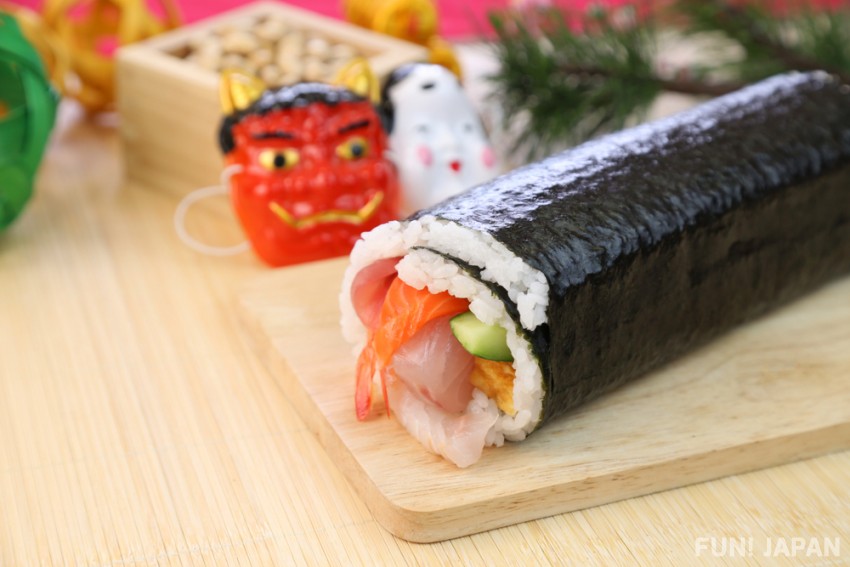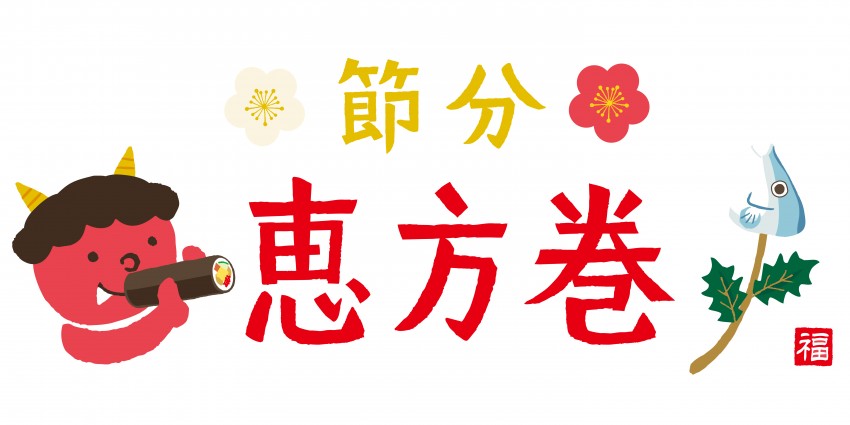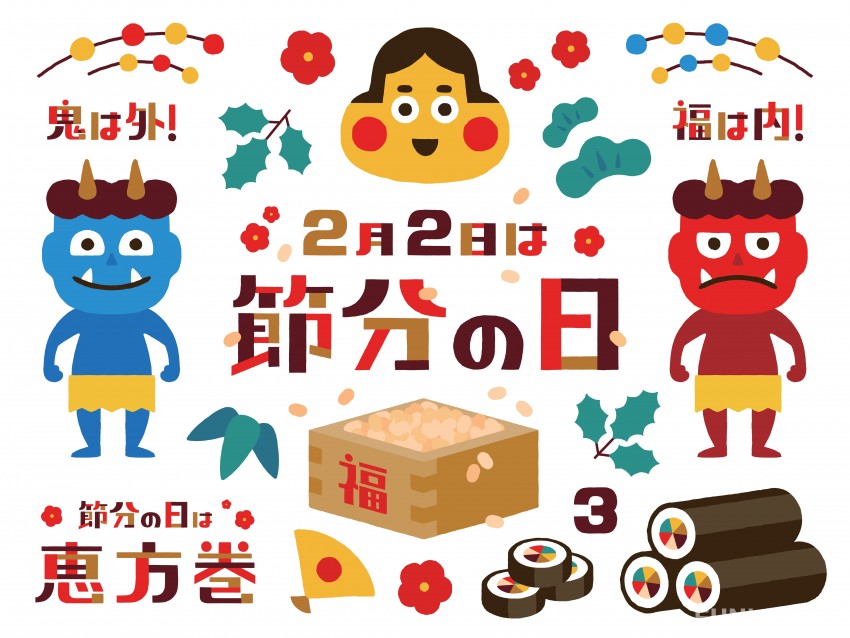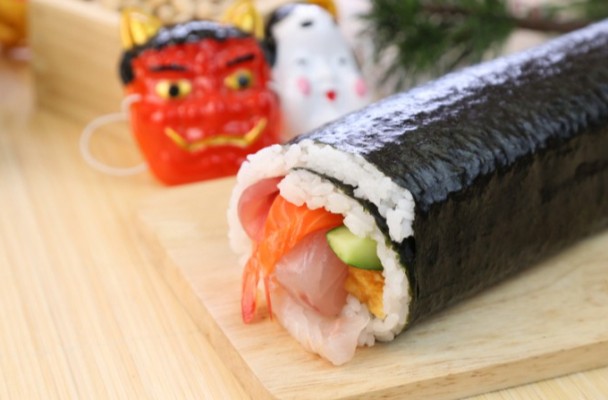
"Setsubun" is one of Japan's yearly customs. It's a day where you drive out the evil and pray for everyone's wellbeing and happiness. Most people sow beans whilst saying "Demon's out, good fortune in". Also, during Setsubun, a lot of people eat something called ehōmaki, which, put simply, is an uncut sushi roll. We have talked about sowing beans in a previous article, but in this article, we are going to be looking into the origins of the ehōmaki!
What is Setsubun?

Setsubun originally referred to the day before the start of a new season. However, after the Edo period of Japan, it started to refer to the day before the start of spring.
What is an Ehōmaki?

Ehō refers to the goddess of lucky directions, who rules over the happiness and well-being of each year. Every year, the direction changes, and so you must face the lucky direction each year whilst eating the ehōmaki, this is said to "Hold happiness and well-being, and not cut fate". Also, it is said that if you speak whilst eating, your good luck will run away, so you have to ensure to be quiet when eating your ehōmaki.
There is a Meaning in all the Ingredients used for Ehōmaki

There are many different ingredients in ehōmaki, but within basic ones, there are 7 main ingredients. The number 7 in Japanese represents 2 main things being 7 treasures, and the 7 gods of fortune. By wrapping these 7 different ingredients in seaweed, it has the meaning of wrapping good fortune.
- Shiitake Mushroom:Shiitake mushrooms have been recognized as an offering to the gods from time immemorial. Also, since they are in the shape of the umbrella, it has the meaning of protecting the body.
- Eel:Has the meaning of success in life. It also has the meaning of long life thanks to the body of an eel being long.
- Kanpyō:They are thin and long, which holds the meaning of "Living long".
- Prawn:The symbol of a long and healthy life.
- Rolled Omlette:The gold color is said to represent and bring about economic fortune.
- Pink Fish Floss:Takes fish such as sea bream and makes them pink. Sea bream has the meaning of "happy" thanks to its name in Japanese.
- Cucumber:Cucumber in Japanese is "Kyuri" which can only be understood as "9 benefits2 which is why it is used.
2021's Setsubun is on 2/2!?

Up until now, Setsubun has typically taken place on the 3rd of February in Japan, however, this date isn't set in stone as it is "the day before the start of spring". Meaning that in 2021, since the start of spring in on the 3rd of February, Setsubun will be on the 2nd of February. It has been 124 years since this last happened!
How about making your own ehōmaki, face in the lucky direction, and eat it quietly in your own country? It's great to try out another country's customs! 2021's lucky direction is south south-east!

Comments